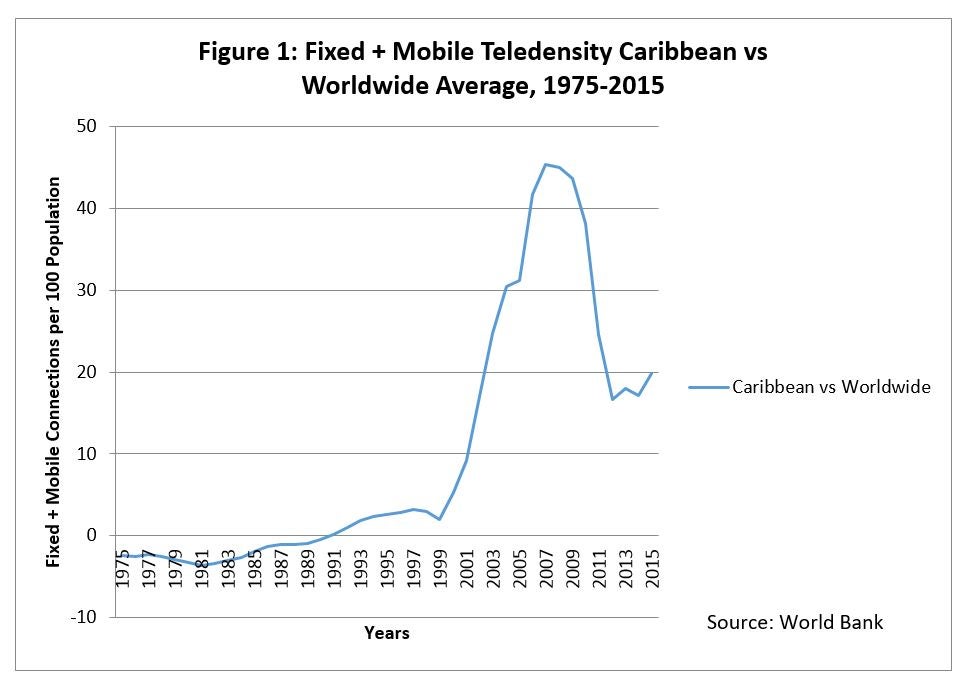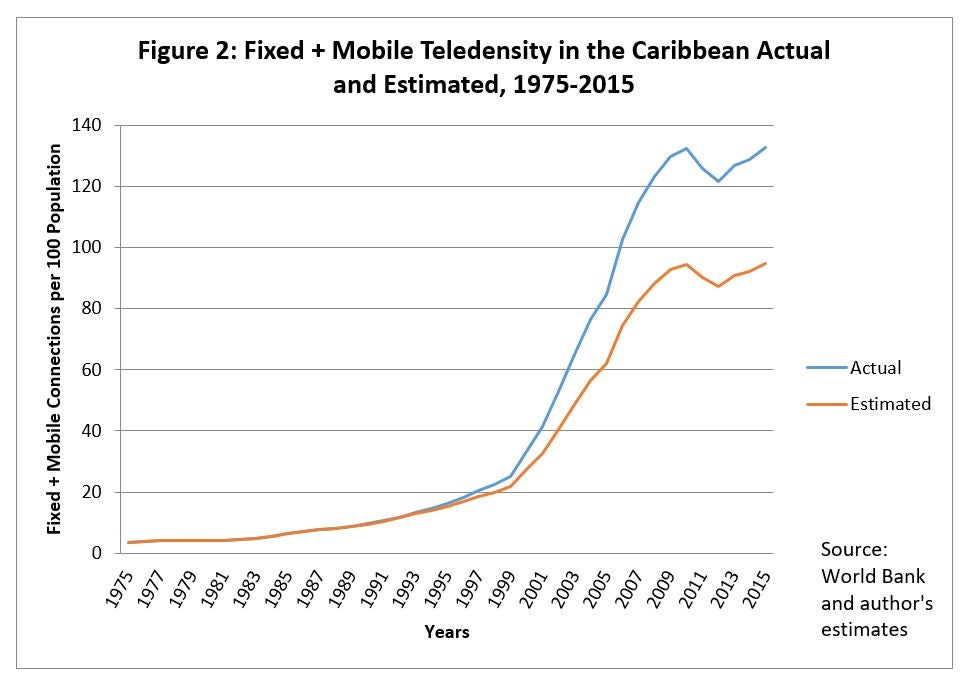
Recent conversations I have had about the value of regulation and private participation in telecoms has prompted me to do some quick calculations using the Caribbean as a test case. The results? Market reforms have had significant impacts in the region.
Reforms in the Caribbean began in the late 1980s although start times vary greatly across the region. Drives varied, including prompting by the World Bank Group, by the United States, and by potential private investors. Sometimes leading countries in the region served as examples for others to follow.
Figure 1 compares fixed + mobile teledensity in the Caribbean to worldwide teledensity. The vertical axis represents the Caribbean average minus the worldwide average. The Caribbean lagged the worldwide average until reforms began around 1990. Early reforms gave the region a spurt, which exploded around the time that Digicel launched in Jamaica in 2001, perhaps illustrating how much competition matters. The drop shown in Figure 1 beginning in 2007 is not so much from a decline in the Caribbean as it is a spurt in mobile phones in Africa and Asia.

Figure 2 shows my estimate of the impact of reforms in the region. The “Actual” line shows the reported fixed + mobile teledensity in the region from 1975 through 2015. It was around 3.5 in 1975 and stood at around 133 in 2015. What would it have been like if there had been no reforms? The line “Estimated” is my estimate. It appears to me the reforms made a 38-point difference in teledensity in 2015. This equates to about 2.6 million more mobile phones and 66,600 more fixed line phones. Competition accounts for about 16% of this additional growth, and privatization and effective regulation account for the remainder.

Sources: World Development Indicators, the World Bank
How did I do these estimates? There have been numerous studies of telecommunications reforms, but I chose a study by Scott Wallsten (Journal of Regulatory Economics, 2001) because it provides clear results for calculating differences. Using his study I estimate that competition, privatization, and independent regulation bumped telecommunications growth by 50% in the region. I construct the “Estimated” line in Figure 2 assuming that reforms began in 1990 and took about 10 years to progress across the region.
This isn’t to say the reforms have been easy or that effective regulation is a done deal. But the rewards to customers appear to be worth the effort.
Related Links:
Benchmarking PPP Procurement 2017
ICT essentials for rebuilding fragile states
Disclaimer: The content of this blog does not necessarily reflect the views of the World Bank Group, its Board of Executive Directors, staff or the governments it represents. The World Bank Group does not guarantee the accuracy of the data, findings, or analysis in this post.


Join the Conversation